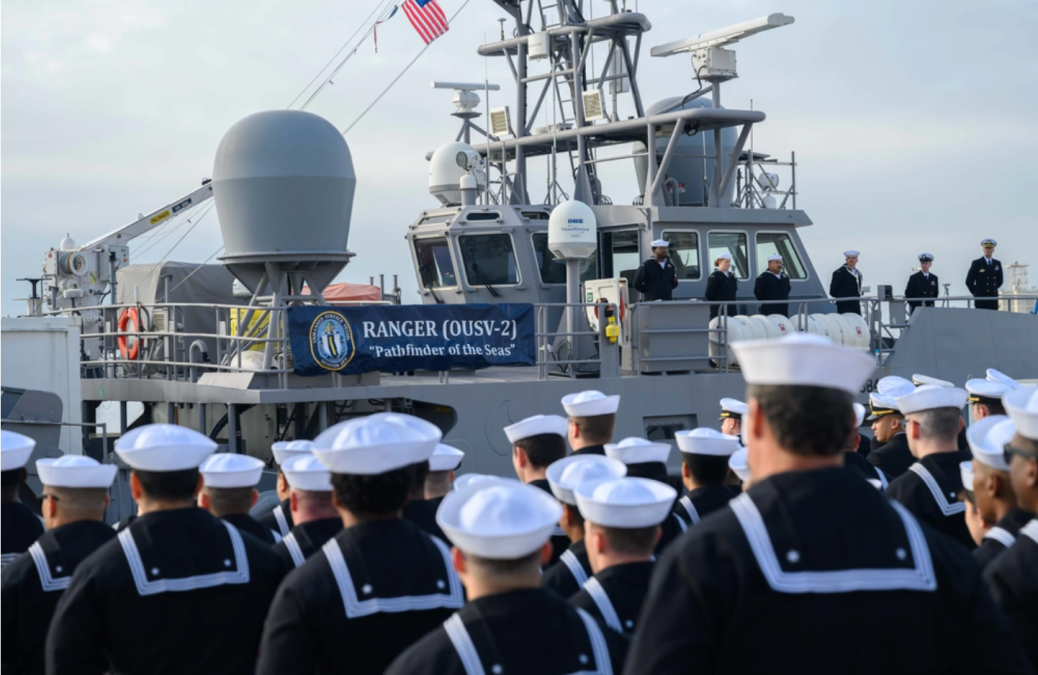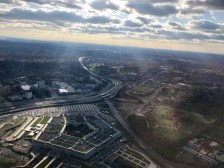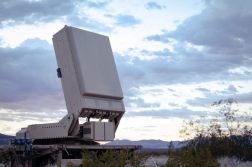Navy’s robo-ship quartet completes 5-month exercise sailing the Pacific

The Navy’s latest, five-month exercise to test and refine maritime drone concepts for future fleet operations — which is coming to a close this week — has demonstrated what it will take for the sea service to integrate and maintain uncrewed surface vessels in expeditionary environments moving forward, according to Cmdr. Jeremiah Daley.
Daley leads Unmanned Surface Vessel Division One (USVDIV-1), the team that operates the four USV prototypes that recently transited the Pacific Ocean with mostly autonomous navigation via the Navy’s Integrated Battle Problem 23.2.
While the exercise’s two medium-sized USVs, Sea Hunter and Sea Hawk, are still trailing behind to complete some final routine operations, Daley returned with a small crew and the larger Mariner and Ranger USVs to homeport Naval Base Ventura County in California on Monday. He briefed reporters about the latest updates and takeaways from the exercise during a call on Tuesday, marking its unofficial completion.
“We’ve learned a lot [about] how we’re going to conduct operations, and then loads of different technical, smaller specifics on how we’re going to not just do the future fight — but how we’re going to develop the technology in a more efficient way, and mature technology in a more efficient way,” Daley explained.
Among other notable events since IBP 23.2 kicked off in August, Daley’s division participated with the robo-ships in the Navy and Marine Corps’ Large Scale Exercise and the Royal Australian Navy’s Exercise Autonomous Warrior.
The personnel and USVs also integrated with the Japan Maritime-Self Defense Force, Royal Australian Navy, Carrier Strike Group 1, III Marine Expeditionary Force, and several independently deployed surface ships in the U.S. 7th Fleet area of operations as part of the integrated battle problem.
“I will tell you that communication — and understanding exactly what manpower is required to do the control of the vessels, and where you do that from — has been tested and pushed to its limit as far as how many vessels, where you control them from, and what the transition of control shifting from point A to point B to point C looks like. I think we have some very good feedback both on resiliency and numbers of personnel required and what that would look like,” Daley said.
For certain portions of the deployment, he also took a small team to embark on different warships to conduct flow control activities with the vessels, which he said introduced “fantastic” feedback for those involved.
The two medium-sized USVs have no running water or toilets — and “other than entering and exiting ports, there were no humans onboard Sea Hunter or Sea Hawk at any point during” the exercise, Daley noted. He also spotlighted how his team experimented with various means to control all the systems from onshore and at sea for this exercise.
Broadly, the Navy has been tight-lipped about the four prototypes’ payloads for this pursuit.
“One benefit of having an [optionally unmanned surface vessel, or OUSV, model] to test medium and large capabilities is that we have a broad brushstroke of space onboard of Ranger and Mariner to not just test the capabilities that we have today — but find out if the right size and form factor exists in the current state and where it could be applied” or adjusted for systems that make it into future programs of record, Daley told DefenseScoop during the call.
Although the medium-sized USVs were limited in scope because of the size of the deck space onboard to test different capabilities, Daley confirmed that his team “did test, between all four vessels — below-the-water, on-the-water, and in-the-air for sensors and platforms — in addition to the autonomy maturation for the vessels themselves, for all four ships during the course of [the exercise].”
The commander did not provide explicit details regarding what the next integrated battle problem might entail.






